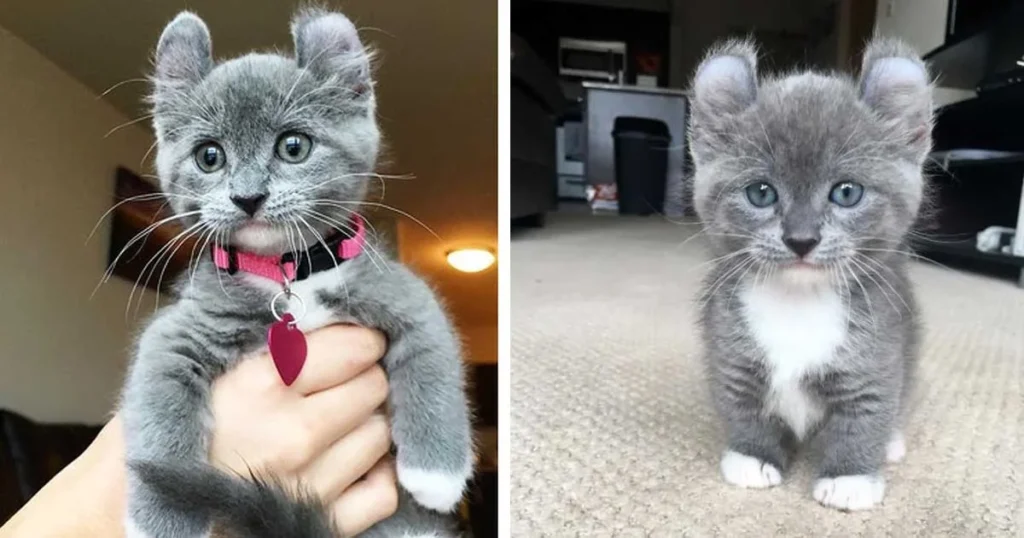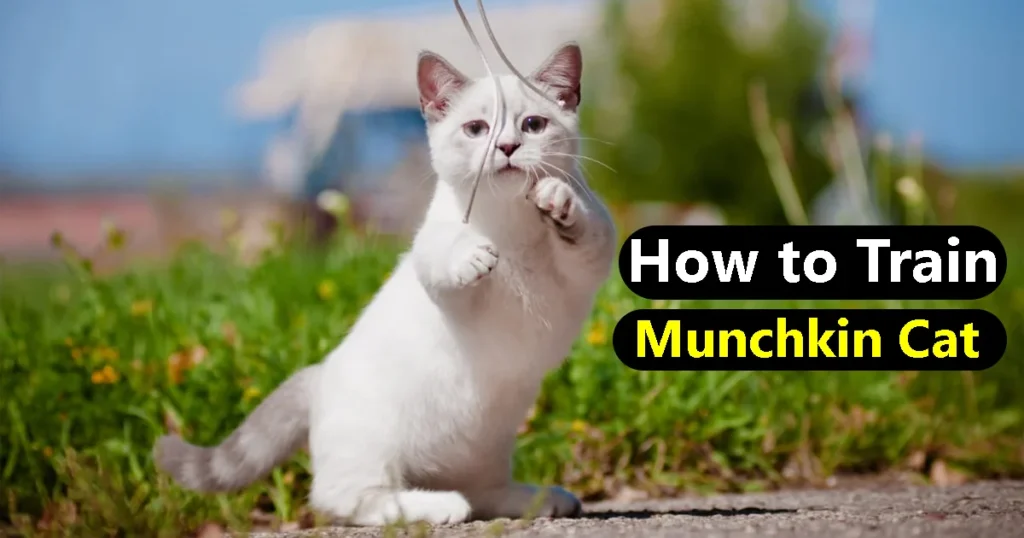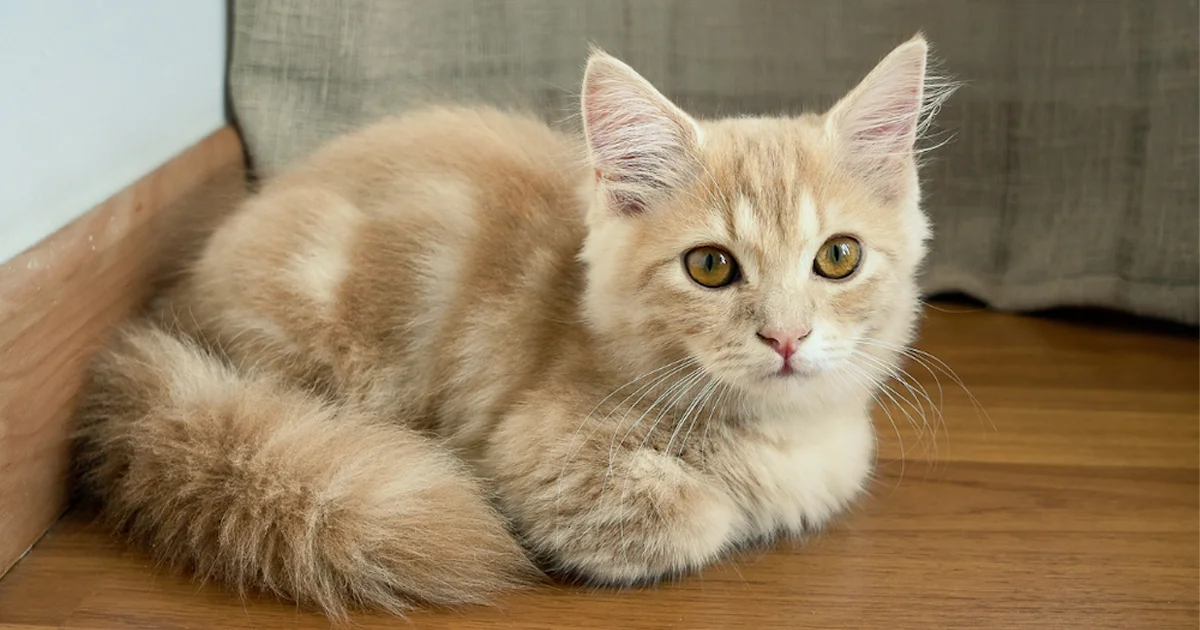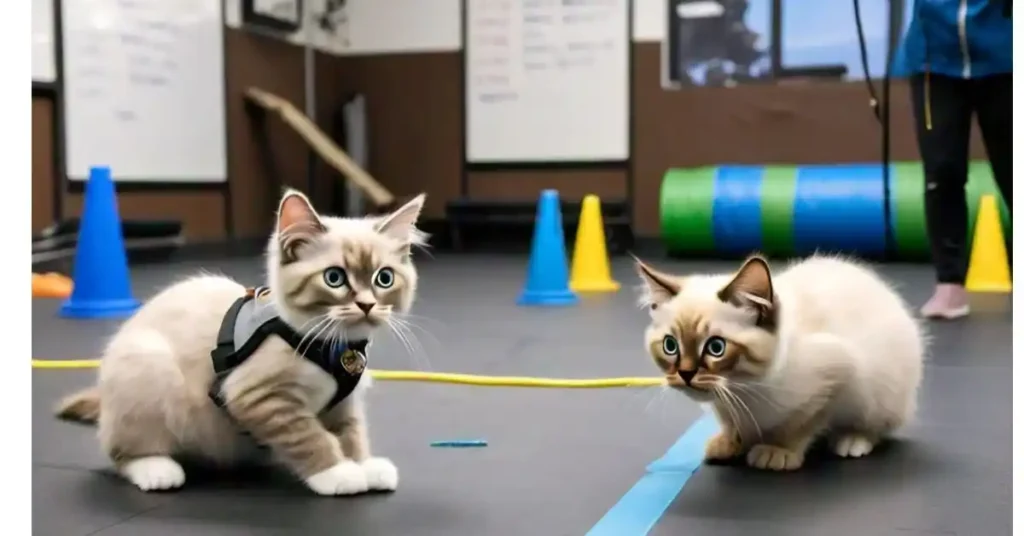Munchkin cats are intelligent and can be trained effectively. They can learn commands, fetch, and even walk on a leash. Training methods such as clicker training can yield positive results as they respond well to rewards and interactive play. It’s essential to start training early and be consistent to ensure they develop good habits.
Understanding the nuances of Munchkin cat behavior and implementing effective training methods can help you build a stronger bond with your pet and ensure a harmonious household. Our article provides a detailed roadmap to Munchkin cat training, emphasizing patience and consistency as key components for success.
We cover essential aspects such as litter box training, teaching basic commands, and addressing specific training challenges associated with Munchkin cats. By following our step-by-step guide, you’ll be prepared to achieve effective training results and enjoy a well-trained, happy Munchkin companion.
Tips for Successful Munchkin Cat Training
Training a Munchkin cat can be a fun and rewarding experience, as they are intelligent, curious, and eager to engage with their owners. Here are some tips for successful Munchkin cat training:
1. Start Early
The earlier you begin training, the better. Kittens are more receptive to new experiences and commands. However, adult Munchkin cats can also be trained with patience and consistency, so don’t worry if you’re starting later.
2. Be Consistent
Consistency is key in training. Use the same verbal commands and gestures each time to avoid confusing your cat. Establish a regular routine for training sessions, playtime, and feeding to help them feel secure and understand what to expect.
3. Use Positive Reinforcement
Reward your Munchkin cat with treats, praise, or affection immediately after they perform a desired behavior. Positive reinforcement helps them associate good behavior with rewards, making it more likely to be repeated.
4. Keep Sessions Short and Fun
Munchkin cats tend to have short attention spans, so keep training sessions brief (5-10 minutes). This prevents them from becoming bored or frustrated. Make training fun by incorporating toys or play into the sessions.
5. Use Interactive Toys
Munchkins are playful and enjoy interactive toys. Incorporate toys such as feather wands or laser pointers into your training sessions. These toys can be used to encourage movement, teach commands, or simply reward your cat for engaging with you.
6. Patience is Crucial
Munchkin cats can be eager learners, but they may need time to fully grasp a new skill. Be patient and avoid punishment or frustration. If your cat doesn’t get it right away, simply redirect their attention and try again later.
7. Socialization is Key
Early socialization helps Munchkin cats grow up to be confident and well-adjusted. Expose them to various environments, people, and other pets in a calm and controlled manner to build their confidence and reduce fearfulness.
8. Use Positive Redirection
If your Munchkin is engaging in undesirable behaviors like scratching furniture or jumping on counters, use positive redirection. Provide an alternative behavior, such as using a scratching post or jumping on a cat tree, and reward them for using the appropriate option.
9. Respect Their Limits
While Munchkin cats are curious and playful, they also have limitations due to their short legs. Avoid forcing them to jump or climb high surfaces that may cause them discomfort or strain. Adjust your training accordingly to suit their physical capabilities.
10. End on a Positive Note
Always end training sessions on a positive note, even if progress has been slow. Reward your cat for participating and for any progress, no matter how small. This ensures they associate training with fun and positive experiences.
By following these tips, you can train your Munchkin cat successfully, ensuring they become a well-behaved, happy, and confident companion. Patience, consistency, and positive reinforcement are the keys to achieving great results!
What Makes Munchkin Cats Unique?
Munchkin cats are unique due to their distinctive physical trait—short legs caused by a genetic mutation. This feature sets them apart from other cat breeds, giving them a playful and distinctive appearance. Here are some of the key aspects that make Munchkin cats special:
1. Short Legs
The most defining characteristic of Munchkin cats is their short, stubby legs, which result from a genetic mutation. This unique trait gives them a low-to-the-ground stance and a “dachshund-like” appearance. Despite their shorter legs, Munchkin cats are surprisingly agile and able to move quickly, although they may not jump as high as other breeds.
2. Playful and Energetic
Munchkins are known for their energetic and playful nature. Despite their short stature, they love to play and are often quite curious. They are active cats that enjoy exploring their environment and engaging in games, often showing a dog-like enthusiasm for fetch or chasing toys.
3. Affectionate and Social
Munchkin cats are highly social and affectionate, making them great companions for families and individuals alike. They enjoy human interaction and will often follow their owners around the house. Their friendly nature makes them great with children and other pets, and they thrive in environments where they are part of the family activities.
4. Adaptable and Intelligent
Munchkin cats are known for their adaptability and intelligence. They are quick learners and can be trained to perform basic commands or use a litter box. They are also good at problem-solving, making them great candidates for interactive toys and puzzles.
5. Variety of Coat Types
Munchkin cats come in a variety of coat types, ranging from short to long hair. Their coats can come in virtually any color or pattern, which adds to their visual appeal. Whether they have a sleek short coat or a luxurious long coat, Munchkins are charming in every form.
6. Gentle and Laid-back Temperament
Munchkins are generally calm and have a laid-back temperament. They are not overly demanding but are always eager for attention and affection. They enjoy lounging around but will also engage in playful activities when invited.
7. Unique Movement
Due to their short legs, Munchkin cats move with a unique, almost waddling gait. Despite this, they are agile and capable of running, climbing, and playing just like other cats, though they may take a more careful approach when it comes to jumping high.
8. Health Considerations
While Munchkin cats are generally healthy, it’s important to monitor their spine and joints, as their short legs can sometimes lead to issues such as lordosis (spinal curvature) or hip dysplasia. Regular vet checkups are essential to ensure their overall well-being.
The combination of their distinctive appearance, playful demeanor, and affectionate nature makes Munchkin cats truly unique, making them a beloved choice for many cat lovers.
Step-by-Step Munchkin Cat Training Guide
Training a Munchkin cat can be a fun and rewarding experience, thanks to their playful, intelligent, and affectionate nature. Munchkins are eager to learn, and with the right approach, you can teach them new tricks and behaviors. Here’s a step-by-step guide to training your Munchkin cat:
1. Create a Positive Training Environment
Ensure the training space is quiet and free from distractions. This will help your Munchkin focus on you and the task at hand. A calm environment also helps them feel secure, making training sessions more effective.
2. Use Positive Reinforcement
Positive reinforcement is the most effective training method. Use treats, praise, or petting as rewards for desired behaviors. This creates a positive association with the action and encourages your cat to repeat it. Always reward your cat immediately after they perform the correct behavior.
3. Start with Basic Commands
Begin with simple commands like “sit,” “stay,” or “come.” Munchkin cats are intelligent and usually quick learners. Use a treat or toy to guide them into the correct position. For example:
- Sit: Hold a treat above their head to encourage them to sit down. Once they do, reward them.
- Come: Say the word “come” and show the treat. When your cat walks toward you, reward them.
4. Keep Sessions Short and Fun
Munchkin cats have a relatively short attention span, so it’s best to keep training sessions brief—around 5-10 minutes. This helps keep your cat engaged without overwhelming them. Incorporating play and rewards will make the sessions more enjoyable for both of you.
5. Use Interactive Toys
Munchkin cats love playtime, and using toys during training is a great way to keep them motivated. Feather wands, laser pointers, and puzzle toys can be used to teach new skills while providing mental stimulation and fun.
6. Litter Box Training
Munchkin cats are usually quick to litter train. Place your cat in the litter box after meals, naps, or play sessions, as they are most likely to need to go then. Reward them when they use the litter box, and keep it clean to maintain their interest.
7. Socialization and Handling
Early socialization is important for Munchkin cats. Expose them to various people, pets, and environments in a controlled, positive way. Gently handle your cat, rewarding calm behavior and creating positive associations with being held or petted.
8. Leash and Harness Training
Munchkin cats can be trained to walk on a leash, but it’s important to introduce the harness slowly. Let them sniff and explore the harness before gently putting it on. Attach the leash and allow your cat to walk around indoors first. Once they’re comfortable, gradually move to outdoor spaces for short walks.
9. Redirect Unwanted Behaviors
If your Munchkin engages in undesirable behaviors, such as scratching furniture or climbing on counters, redirect them to an appropriate alternative, such as a scratching post or cat tree. Reward them when they use the designated item instead of the unwanted behavior.
10. Be Patient and Consistent
Munchkin cats are generally eager to please, but like any cat, they may need time to learn new tricks. Be patient and consistent in your training efforts. Avoid punishment, as it can cause stress or confusion. Instead, focus on rewarding good behavior and reinforcing positive actions.
11. End on a Positive Note
Always end training sessions on a positive note, even if your cat hasn’t fully mastered the behavior. Reward them for participating, and provide affection and praise. This will help your Munchkin associate training with fun and positive experiences.
By following these steps and maintaining a patient, consistent approach, you can successfully train your Munchkin cat to follow commands, use the litter box, walk on a leash, and more. Remember, training should be an enjoyable experience for both you and your cat!

Tips for Training a Munchkin Cat
Use positive reinforcement – Reward your cat with treats, toys, or attention when they exhibit the desired behavior. Train before meals – A hungry cat will be more motivated to learn in order to earn their food. Train in a quiet place – Eliminate distractions like TV noise or children to keep your cat focused. Keep training sessions brief and consistent – 15 minutes or less, but do it regularly.
Train a munchkin cat to use a litter box
Training your Munchkin cat to use a litter box is a fundamental part of ensuring a clean and comfortable living environment for both you and your feline companion. Munchkin cats, with their playful and curious nature, generally adapt well to litter box training.
Understanding Munchkin Cats
Munchkin cats are a relatively new breed characterized by their short legs, which are caused by a genetic mutation. They are known for their playful, outgoing, and sociable nature, making them a great fit for families or individuals who enjoy interacting with their pets.
- They are also known for their problem-solving skills and naturally inquisitive nature, which can sometimes result in them stealing small objects and hiding or hoarding them.
Preparing for Training
Creating a positive environment is crucial for successful training. Set up a designated training area with all the necessary supplies, including treats, toys, and a comfortable litter box. Ensuring your cat feels safe and comfortable is the first step towards effective training.
Facts about Munchkin Cat Training
Training a Munchkin cat isn’t significantly different from training other cat breeds, but there are some aspects to consider due to their unique physical characteristics and potential health concerns:
| Aspect | Details |
|---|---|
| Positive Reinforcement | Munchkin cats respond well to positive reinforcement techniques such as treats, praise, and playtime. |
| Health Considerations | Due to their short legs, Munchkin cats may be more prone to joint problems. Be mindful of their limitations during training to avoid putting undue stress on their bodies. |
| Physical Exercise | While Munchkins may not jump as high as other cats, they still need regular exercise. Incorporate interactive toys and games into their training routine to keep them active and prevent obesity. |
| Litter Box Training | Ensure your Munchkin cat is familiar with their litter box and consistently uses it. They may prefer a litter box with lower sides for easier access due to their small stature. |
Munchkin cats benefit from early socialization, which helps them adapt to various people, animals, and environments, fostering their confidence. To protect your furniture, provide appropriate scratching posts or pads and encourage their use with positive reinforcement. Establishing a consistent feeding routine is key to regulating their eating habits and preventing overeating.
| Aspect | Details |
|---|---|
| Training Adaptations | Modify training exercises to accommodate Munchkin cats’ physical limitations. Use lower obstacles for agility training and adapt interactive toys to suit their needs. |
| Overcoming Stereotypes | Address and challenge any stereotypes related to Munchkin cats’ breeding history and appearance. Focus on the individual cat’s abilities and personality rather than preconceived notions. |
| Patience and Persistence | Recognize that Munchkin cats, like all cats, have unique personalities and temperaments. Be patient and persistent to achieve desired behaviors and foster a positive training experience. |
Basic Training Techniques
Start with fundamental training exercises, such as litter box training and socialization. Munchkin cats are quick learners, but they thrive on consistency and positive reinforcement. By using treats and praise, you can encourage desirable behaviors and discourage unwanted ones.
Bonding Through Training
Training isn’t just about teaching commands—it’s also about strengthening the bond between you and your cat. By spending quality time together and engaging in positive activities, you can deepen your relationship and create a lifelong connection.
FAQs
What is the best way to start training a Munchkin cat?
Starting training with a Munchkin cat involves using positive reinforcement techniques. Begin with basic commands like “sit” or “come” and use treats, praise, or toys as rewards.
How can I train my Munchkin cat to use a litter box properly?
To train your Munchkin cat to use the litter box, place the box in a quiet, accessible location. Encourage your cat to use it by placing them in the box after meals and naps. Reward them with treats and praise when they use the box correctly.
Are Munchkin cats easy to train compared to other breeds?
Munchkin cats are generally smart and eager to please, which can make them relatively easy to train. Training should be adapted to their physical abilities, focusing on tricks and commands that suit their unique build.
Can Munchkin cats be trained to walk on a leash?
Yes, Munchkin cats can be trained to walk on a leash. Start by introducing a harness and leash indoors, allowing your cat to get used to the new gear. Gradually practice walking short distances inside before venturing outdoors. Be patient and reward your cat for walking calmly on the leash.
What are some common training challenges with Munchkin cats?
Common training challenges with Munchkin cats may include their lower energy levels and shorter legs, which can affect their agility. They might also be less inclined to engage in activities that require jumping or climbing.





